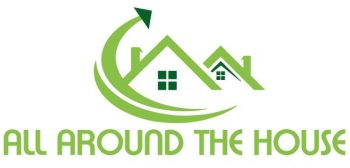Choosing the Right Paint Type
When the time comes to do some painting around the house there is more to take into consideration than color. Specifically, oil-based or water-based latex paint? And what sheen is appropriate? These are the questions to ask when choosing the right paint type for a DIY project. Each has its advantages and disadvantages.
Choosing the Right Paint Type
The Pros and Cons of Oil-Based Paint
 One of oil-based paint’s advantages is superior adhesion. When is this important? For one example, when painting over a chalky surface. Chalk is that powdery substance that comes off when a hand is wiped across the surface of the paint.
One of oil-based paint’s advantages is superior adhesion. When is this important? For one example, when painting over a chalky surface. Chalk is that powdery substance that comes off when a hand is wiped across the surface of the paint.
Oil-based paint is also a good choice when painting a surface that already has several layers of oil-based paint on it. In fact, latex should not be used in this case.
Be aware that oil-based paint has its drawbacks, especially when used indoors. It has a heavy odor which can be problematic to sensitive folks. Additionally, its drying time is very long – up to 24 hours. This makes it a poor choice when a second coat is needed.
Clean up is more difficult that with latex paint. Paint thinner must be used and then disposed of properly.
The Pros and Cons of Water-Based Latex Paint
Latex paint is used in the overwhelming number of DIY projects. Its fast drying time, usually no more than 6 hours, means the project will take less time. It is less likely to mildew because of its water base, unlike the oils used in oil-base paint, which can actually feed mildew.
Clean up is a breeze with latex paint; soap and water is all that’s required. Disposal of the cleaning agent is no longer a problem.
Water-based latex paint is also very flexible. This makes it the superior candidate on surfaces that flex and are exposed to heat and cold, such as aluminum siding and metal garage doors.
Learn the basics of how to paint in this post
Choosing the Sheen of the Paint
Paint sheen is the degree of shine that the dried paint exhibits. The correct one for the DIY project is determined by considering aesthetic needs, how cleanable the surface will need to be, and how many flaws are on the surface. A rule of thumb to remember is that the shinier the paint, the more the flaws will stand out.
There are four paint sheen grades: gloss, semi-gloss, eggshell or satin, and flat.
![]() Gloss – Gloss paint is the shiniest of the four. It will reflect more light and it is highly washable. It’s commonly used on door jambs and other wood trim, to set it off visually from the wall.
Gloss – Gloss paint is the shiniest of the four. It will reflect more light and it is highly washable. It’s commonly used on door jambs and other wood trim, to set it off visually from the wall.
- Semi-gloss – Semi-gloss paint is less reflective and more subdued than gloss but is still easy to clean. This makes it a good choice in kitchens and bathrooms.
- Eggshell or satin – This paint is a bit duller than semi-gloss. Visually, it lends a warmth to the surface, so it works well on walls and kitchen cabinets.
- Flat – Flat sheen paint does not reflect light at all, which makes it ideal for ceilings. One drawback is that it is difficult to clean.
To summarize, consider the project and use the above paint characteristics to decide whether oil-base or water-based latex paint is right and what sheen is best. Then, pick the color!



 Gloss – Gloss paint is the shiniest of the four. It will reflect more light and it is highly washable. It’s commonly used on door jambs and other wood trim, to set it off visually from the wall.
Gloss – Gloss paint is the shiniest of the four. It will reflect more light and it is highly washable. It’s commonly used on door jambs and other wood trim, to set it off visually from the wall.